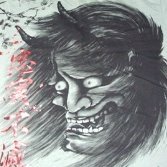Why I Find Thai A Difficult Language
-
Recently Browsing 0 members
- No registered users viewing this page.
-
Topics
-
-
Popular Contributors
-
-
Latest posts...
-
284
-
284
My view today.
Do you ever go outside and do stuff? Thailand has markets and temples, restaurants and cafes. Are you even in Thailand? -
72
Report Sunburn Nightmare: British Teen’s Thailand Trip Derailed by Sun
Happened to one of my sisters as well when she came to visit me in Thailand. I warned her multiple times about baking in the sun, especially since she came in February, which is winter time in Germany. She wouldn't listen and paid the price big time because on the secone evening the skin on her belly started to peel in sheets. My response was, I hate to tell you, but I told you so and I don't want to her any moaning about it either! Some people just have to learn the hard way! -
284
My view today.
The ultimate master class in how to fail at photo taking. Do you feel you take bad photos? Harris can surely help you to take your picture taking skills to even lower levels. Photos that are right side up? Nah, who cares! -
6
Is the tax for incoming transfers in effect as of today,Yes or no?
So if my wife transferred say 3 million baht to canada (that money being fully taxed in Thailand) and she wants to transfer that money back in the future, she would have to declare it and pay tax? Lol, Thailand can fully f off 🤣 -
2
UK Mini Mart Workers Caught in the Crossfire of Britain's Illegal Tobacco Trade
The only product whose producers are knowingly killing their customers. And the mugs still but them.
-
-
Popular in The Pub






.thumb.jpeg.d2d19a66404642fd9ff62d6262fd153e.jpeg)



.thumb.jpeg.42eea318e3350459f0aaaa5460326bca.jpeg)

Recommended Posts
Create an account or sign in to comment
You need to be a member in order to leave a comment
Create an account
Sign up for a new account in our community. It's easy!
Register a new accountSign in
Already have an account? Sign in here.
Sign In Now